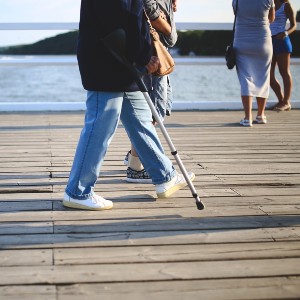Digital monitoring of weight-bearing improves success rates and reduces complications in lower extremity surgeries

Accepted: 25 October 2023
HTML: 4
All claims expressed in this article are solely those of the authors and do not necessarily represent those of their affiliated organizations, or those of the publisher, the editors and the reviewers. Any product that may be evaluated in this article or claim that may be made by its manufacturer is not guaranteed or endorsed by the publisher.
Authors
The aim of this study is to develop a digital monitoring system to track weight and evaluate its impact on postoperative outcomes after lower extremity surgeries (LES). This parallel randomized controlled trial enrolled 266 patients who underwent LES (fracture or joint replacement) at our medical center between March 11, 2022, and January 10, 2023. Patients were randomly assigned to the intervention and control groups in a 1:1 ratio. The intervention group (n=116) used a cane and shoes equipped with a weight-bearing system after lower limb surgery, while the control group (n=116) used a simple cane and shoes without a weight-bearing system. The primary outcomes included callus formation, duration of union, and success rate of union in the two groups. The intervention group had a significantly higher rate of complete surgical success than the control group (93.9% vs. 79.3%, p=0.001). The intervention group also had a significantly lower risk of non-union than the control group (OR: 2.33, 95% CI: 1.14, 3.48, p=0.001). The mean duration of surgery until the time of union and the meantime of callus formation was significantly lower in the intervention group (p=0.01). The use of a digital monitoring system for weighing in LES significantly increased the success rate and reduced post-operative complications. Therefore, incorporating this system can enhance the rehabilitation process and prevent revision surgeries in patients with LES.
How to Cite

This work is licensed under a Creative Commons Attribution-NonCommercial 4.0 International License.
PAGEPress has chosen to apply the Creative Commons Attribution NonCommercial 4.0 International License (CC BY-NC 4.0) to all manuscripts to be published.

 https://doi.org/10.4081/ejtm.2023.11974
https://doi.org/10.4081/ejtm.2023.11974



